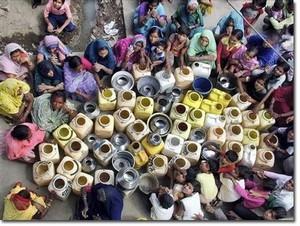
submitted by Samuel Bendett
(SEE LINKS TO CONFERENCE AND DECLARATION BELOW)
homelandsecuritynewswire.com - May 28, 2013
A conference of 500 leading water scientists from around the world, held last week in Bonn, issued a stark warning that, without major reforms, “in the short span of one or two generations, the majority of the nine billion people on Earth will be living under the handicap of severe pressure on fresh water, an absolutely essential natural resource for which there is no substitute. This handicap will be self-inflicted and is, we believe, entirely avoidable.”
The scientists pointed to chronic underlying problems led by mismanagement, and offered a prescription to policy makers in a 1,000-word declaration issued at the end of a 4-day meeting in Bonn, Germany. The conference, Water in the Anthropocene, was organized by the Global Water System Project (GWSP).
(READ COMPLETE ARTICLE)





 Image: Rodney Byars, center, walked ahead of his brother, Rich, through a field of dead and stalled corn this week in Geff, Ill.
Image: Rodney Byars, center, walked ahead of his brother, Rich, through a field of dead and stalled corn this week in Geff, Ill.  nrdc.org
nrdc.org Drought has been especially hard in the U.S. southwest // Source: tamu.edu
Drought has been especially hard in the U.S. southwest // Source: tamu.edu
Recent Comments